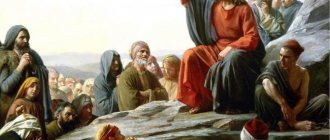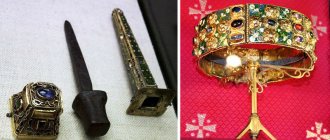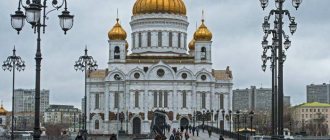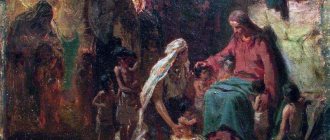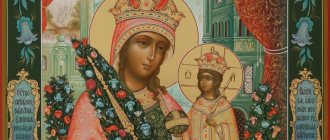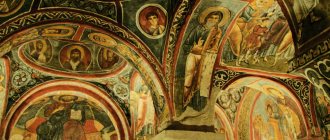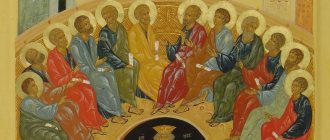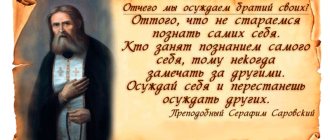Uniates is a popular term for Eastern Christians who accept the authority of the Roman Papacy. In Ukraine and Belarus, the term became generally accepted after the Union of Brest (1596), when some Orthodox inhabitants of Western Rus' united with Rome, accepting Catholic dogma, but retaining their Byzantine rite and canonical features. In Catholic and Uniate writings, those who rejected union were often called "separationists." The term “Uniates” acquired a negative connotation in Orthodox polemical literature, Ukrainian folk oral literature (duma) and some classical Ukrainian writings (primarily in the poems of Taras Shevchenko). In modern times, Ukrainian Catholics have objected to the term both for ecclesiological reasons and because of the pejorative connotations characteristic of the writings of opponents of the union. Nevertheless, many Uniates accepted this, resigning themselves to such a label.
Terminology
The term "Uniate", as previously stated, is applied to Eastern Catholic churches that formerly belonged to the Oriental or Oriental Orthodox Churches or, in rare cases, to the Assyrian Church of the East. The term is sometimes considered derogatory, but was nevertheless often used by Roman and Eastern Catholics until the Second Vatican Council. Official Catholic documents no longer use the term due to its negative reputation associated with criticism of the Uniate Church. According to John Erickson of St. Vladimir's Orthodox Theological Seminary, the very term "Uniate," once used proudly in Roman communication, has long been considered pejorative. The “Eastern Rite” is also no longer held in high esteem among the Uniates, since it created the illusion that the Uniates are some kind of “wrong” Catholics, different from their Western counterparts.
The Second Vatican Council affirmed that Eastern Catholics form part of the United Catholic Church and should serve as a bridge between the West and the East. The Uniates noted this, rejoicing at such a favorable attitude towards themselves from Rome. Today the term is used in all languages of the world to refer to Greek Catholics.
Spreading
Catholicism is widespread in Western European (France, Spain, Belgium, Portugal, Italy) and Eastern European (Poland, Hungary, partly Latvia and Lithuania) countries, as well as in the countries of South America, where the overwhelming majority of the population professes it. There are also Catholics in Asia and Africa, but the influence of the Catholic religion is insignificant here. Catholics in Russia are a minority compared to Orthodox Christians. There are about 700 thousand of them. Catholics in Ukraine are more numerous. There are about 5 million people.
Historical background
Before the Uniate Church arose, the Catholic Church experienced a lot of conflicts with the Eastern (Orthodox) Church.
The fellowship of the Christian churches was disrupted by differences in matters of faith, with each side accusing the other of heresy or departure from the true faith (“orthodoxy”). Communion was disrupted due to disagreement over issues of power and the legitimacy of the election of a particular bishop. In these latter cases, each side accused the other of schism, but not of heresy.
They have purgatory, and we have ordeals.
Orthodoxy and Catholicism also differ in their understanding of what the human soul goes through after death. Catholicism has a dogma about purgatory - a special state in which the soul of the deceased is located. Orthodoxy denies the existence of purgatory, although it recognizes the need for prayers for the dead.
In Orthodoxy, unlike Catholicism, there is a teaching about aerial ordeals, obstacles through which the soul of every Christian must pass on the way to the throne of God for private judgment.
Two angels lead the soul along this path. Each of the ordeals, of which there are 20, is controlled by demons - unclean spirits who are trying to take the soul going through the ordeal to hell. In the words of St. Theophan the Recluse: “No matter how wild the thought of ordeals may seem to wise men, they cannot be avoided.” The Catholic Church does not recognize the doctrine of ordeals.
Great Schism of Churches
The split between East and West occurred in the context of cultural differences between the Greek-speaking East and the Latin-speaking West and the rivalry between the Churches in Rome, which demanded primacy not only in matters of honor, but also in matters of imperious authority - and in Constantinople, which demanded parity with Rome in the matter management of the Church. Rivalry and lack of understanding gave rise to disputes, some of which appear as early as the acts of 692. At the Council of Florence (1431-1445), these debates about Western theological traditions and customs were incorporated into the Nicene Creed.
The split of the united Christian Church into Catholic and Orthodox is traditionally counted from 1054, when the Patriarch of Constantinople, Michael I Cerularius, and the Papal Legate, Humbert Silva Candida, mutually excommunicated each other (in 1965, these mutual expulsions were canceled by both Rome and Constantinople). Despite this event, for many years the two Churches continued to maintain a partnership and seemed unaware of any formal or final break.
However, the alienation continued to grow. In 1190, the Eastern Orthodox theologian Theodore Balsamon, who was Patriarch of Antioch, wrote that "no Latin should receive communion unless he first declares that he will renounce the doctrines and customs that separate him from us."
The Patriarchate of Constantinople was later abolished in 1204 by the Catholic armies of the Fourth Crusade, and within two decades, in 1182, there was a massacre of Latins (i.e. Catholics) in Constantinople. Thus, in the XII-XIII centuries, both sides began to openly quarrel, and each of them reserved the right to be called the true abode of Christ. Over time, it became common to refer to the Eastern side as the Orthodox Church and the Western side as the Catholic Church.
Inquisition procedure
There were two types of inquisitorial investigation: general and individual. In the first, a large part of the population of a particular area was surveyed. In the second case, a specific person was called through the priest. In cases where the summoned person did not appear, he was excommunicated from the church. The man swore an oath to sincerely tell everything he knew about heretics and heresy. The progress of the investigation and proceedings were kept in the deepest secrecy. It is known that the inquisitors widely used torture, which was authorized by Pope Innocent IV. At times their cruelty was condemned even by secular authorities.
The accused were never given the names of the witnesses. Often they were excommunicated, murderers, thieves, oathbreakers - people whose testimony was not taken into account even by the secular courts of that time. The defendant was deprived of the right to have a lawyer. The only possible form of defense was an appeal to the Holy See, although it was formally prohibited by Bull 1231. People once condemned by the Inquisition could be brought to justice again at any time. Even death did not save him from the investigation. If a person who had already died was found guilty, then his ashes were taken from the grave and burned.
The emergence of the Uniate Church
After the fall of Constantinople, people appeared in Europe who wanted to restore the unity of the Catholic and Orthodox churches. In 1438, the Council of Florence took place, at which a long debate took place on theological differences between the two churches. The reason for this dispute was the desire of some cardinals and theologians to restore church unity.
Several European Orthodox churches eventually linked themselves to Rome, forming the Eastern Catholic Churches. Catholic Rome accepted them without requiring them to adopt the customs of the Latin Church, so that they all have their own liturgical, theological, spiritual and disciplinary heritage determined by culture and historical circumstances. A Uniate priest, for example, wears the same vestments as Orthodox ministers.
We are baptized differently
Catholics and Orthodox Christians have many differences in rituals. Thus, differences in performing the sign of the cross are obvious. Orthodox Christians cross from right to left, Catholics from left to right.
The norm of the Catholic blessing of the cross was approved in 1570 by Pope Pius V: “He who blesses himself... makes a cross from his forehead to his chest and from his left shoulder to his right.”
Catholics usually cross themselves with all five fingers as a sign of the “sores on the body of the Lord Jesus Christ” - two on the hands, two on the feet, one from a spear. In Orthodoxy, after Nikon’s reform, three fingers were adopted: three fingers folded together (symbolism of the Trinity), two fingers pressed to the palm (the two natures of Christ - divine and human. In the Romanian Church, these two fingers are interpreted as a symbol of Adam and Eve falling to the Trinity).
Uniates in Ukraine and Belarus
Preliminary attempts to come to an alliance with the Catholic Church were made several times. The most famous attempt was the signing of the Union of Florence by Metropolitan Isidore of Kyiv, which technically united the Ruthenian Orthodox Church.
In 1588-1589 Patriarch Jeremiah II of Constantinople traveled throughout Eastern Europe, in particular the Polish-Lithuanian Commonwealth and the Grand Duchy of Moscow, where he finally recognized the Russian Orthodox Church in Moscow from 1458 and consecrated Patriarch Job of Moscow. Patriarch Jeremiah II deposed Metropolitan Onsiphorus Divochka of Kyiv and, with the approval of King Sigismund III of Poland, consecrated Michael Rohoza as the new Metropolitan of Kyiv, Galich and All Rus'.
In 1595-1596, a number of Western Russian dioceses, under pressure from the Polish-Lithuanian authorities, decided to sever relations with the Russian Orthodox Church and the Patriarchate of Constantinople, recognizing the authority of the Pope over themselves. This decision was supported by the King of Poland and the Grand Duke of Lithuania, Sigismund III Vasa, which outraged some bishops and prominent nobles of Rus', as well as the Zaporozhye Cossacks. These events gave rise to the beginning of the “Uniates-Orthodox” format, which was beneficial to the Polish-Lithuanian nobility.
Punishment system
The list of punishments for heretics was established by bulls 1213, 1231, as well as by the decrees of the Third Lateran Council. If a person confessed to heresy and repented during the trial, he was sentenced to life imprisonment. The Tribunal had the right to reduce the term. However, such sentences were rare. The prisoners were kept in extremely cramped cells, often shackled, and fed with water and bread. During the late Middle Ages, this sentence was replaced by hard labor in galleys. Obstinate heretics were sentenced to be burned at the stake. If a person confessed before the start of his trial, then various church punishments were imposed on him: excommunication, pilgrimage to holy places, donations to the church, interdict, various types of penances.
Other Eastern Catholic churches
Uniate Catholics are not the only representatives of “hybrid” denominations that formed after the adoption of Catholic norms by some Orthodox Christians. For example, the Maronite Church (Middle East) is considered to be the only one of the Eastern Catholic Churches that has always remained in full communion with the Holy See, while most other churches were united from the 16th century onwards. However, the Melkite Catholic Church and the Italo-Albanian Greek Catholic Church also require constant communication with the Pope, like true Catholics.
Full communion represents the mutual sacramental exchange between the Eastern Catholic Churches and the Roman Church, including eucharistic interaction. On the other hand, the liturgical traditions of the 23 Eastern Catholic churches, including Byzantine, Alexandrian, Armenian, East Syrian and West Syriac, are shared with other Eastern Christian churches: Eastern European Orthodox, Balkan Orthodox, Assyrian Church of the East and the so-called Ancient Church of the East . Although some theological issues separate Eastern Catholic churches from other Eastern Christian churches (primarily Orthodox), they admit members of the latter to the Eucharist and other sacraments, guided by the laws of the Eastern canon.
Notably, many Eastern Catholic churches take a different approach to sacred celibacy than the Latin Church does, and allow married men to be ordained to the priesthood (though not to the bishopric).
Eastern Catholic churches have their origins in the Middle East, East Africa, Eastern Europe and India. However, since the 19th century, the diaspora has spread to Western Europe, America and Oceania, partly due to persecution carried out by local Orthodox Christians and, above all, Muslims.
Inquisitorial Tribunal
The inquisitors were recruited from various members, primarily from the Dominicans. The Inquisition reported directly to the Pope. Initially, the tribunal was headed by two judges, and from the 14th century - by one, but it consisted of legal consultants who determined the degree of “hereticism”. In addition, the number of court employees included a notary (certified testimony), witnesses, a doctor (monitored the condition of the defendant during executions), a prosecutor and an executioner. The inquisitors were given part of the confiscated property of heretics, so there is no need to talk about the honesty and fairness of their trial, since it was beneficial for them to find a person guilty of heresy.
